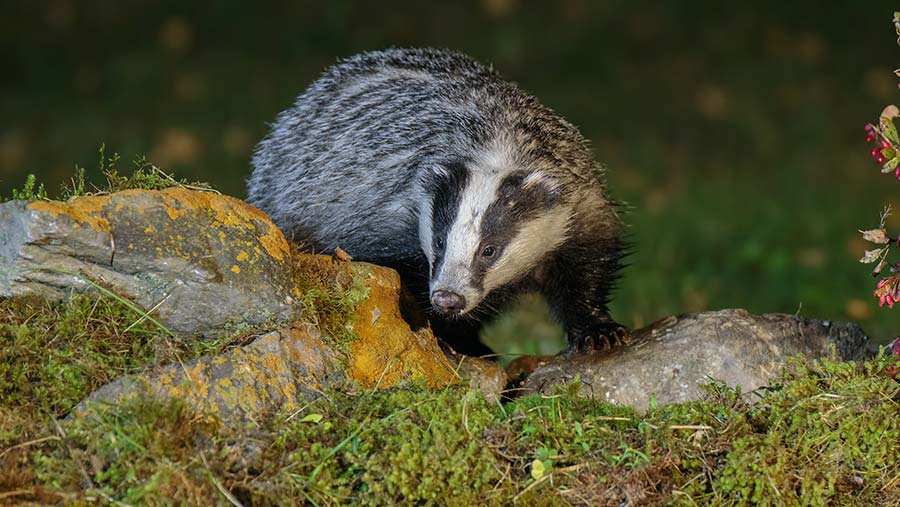Badger culling policy reduces cattle TB by 56%, study shows
 © Simone/Adobe Stock
© Simone/Adobe Stock A peer-reviewed scientific analysis of Defra’s badger control policy in England has revealed a 56% fall in bovine TB rates.
Defra started its badger control policy in 2013 to reduce the reservoir of infection in badgers and, in doing so, reduce rates of TB in cattle.
A new study by Colin Birch et al, published in Nature journal (PDF), analysed the effect of badger culling on bovine TB rates across 52 areas in England.
See also: Vet Dick Sibley casts doubt on Defra TB eradication plan
Researchers found the herd incidence rate of TB reduced by 56% on average (with a 95% confidence interval of 41-69%) up to the fourth year of culling interventions.
The largest drops in TB cattle rates were seen in years two and three after culling. However, there was insufficient evidence to judge whether the incidence rate reduced beyond four years, the analysis found.
The study authors concluded that their analysis “indicates the importance of reducing transmission from badgers to reduce the incidence of TB in cattle”.
But they also note that other variables, such as vaccination of badgers and finding ways to reduce their fertility, plus on-farm biosecurity measures, may also help to reduce bovine TB.
Industry reaction
Supporters of culling have welcomed the findings of the study by Dr Birch, lead statistician at the Animal and Plant Health Agency (Apha), as further evidence that culling alongside cattle testing and on-farm biosecurity helps to reduce TB rates.
Cheshire-based dairy farmer Phil Latham, a former member of Defra’s TB Partnership, told Farmers Weekly the evidence that culling badger reduces TB rates in cattle is “incontrovertible”.
Commenting on the Birch study, Mr Latham said: “Firstly, it is fantastic news that there is evidence that badger culling is having a significant impact on reducing the number of detected infections in cattle, with reactor numbers plummeting.
“What this should do is question the current moratorium on licensing culls because the decline in TB hasn’t plateaued, so there are still benefits to be had from pursuing a culling approach.
“Personally, I think government should licence culling until alternative tools are proven and ready to deploy, if not, the benefits of this enormous farmer-led effort are going to dwindle in time.”
‘Muddying waters’
Mr Latham said when interpreting statistics on badger culling, it is always tempting for those opposed “to try to muddy the waters”.
But he added: “All of the tools that were used post-culling to enhance surveillance in cattle were also deployed for a decade prior to culling in Cheshire.
“Six-monthly using severe interpretation, and the use of gamma were all deployed. None of that changed the upward trajectory of the disease.
“All of the studies that have looked at the impact of culling badgers have shown a marked decrease in TB in cattle following culling.
“There are no plans to scale up badger vaccination and deploy it across the country because of the cost, and there is no prospect of cattle vaccine being deployed any time soon.”
But opponents and sceptics of badger culling have questioned the wording of the Birch study and its statistical content.
Tom Langton, a research ecologist and wildlife campaigner, pointed out that the Birch study talks about badger control policy, which includes testing, so the conclusion could equally be that the association is with more intensive cattle testing.
“It’s quite clear that gamma [blood] testing and six-monthly testing have made a massive difference to the levels of bovine TB,” he added.
“I have grave concerns that this study is selective, policy-based science to fit a government agenda.”
He added: “Comments from senior academics have already questioned the validity of this publication and it will require checking before use in any policy consultation document.
“If Defra has waited for new science prior to the wider consultation on widespread 100% badger culling, then that science must be checkable before they start the epi-culling consultation – or there may be legal implications.”
Latest TB data
The latest official Defra statistics on bovine TB show that over the 12 months to the end of September, TB cattle slaughterings in England dropped 15% from the previous 12 months to 19,506.
In Wales, where the Labour administration has refused to roll out badger culling, 9,669 cattle were slaughtered, an increase of 2%.
